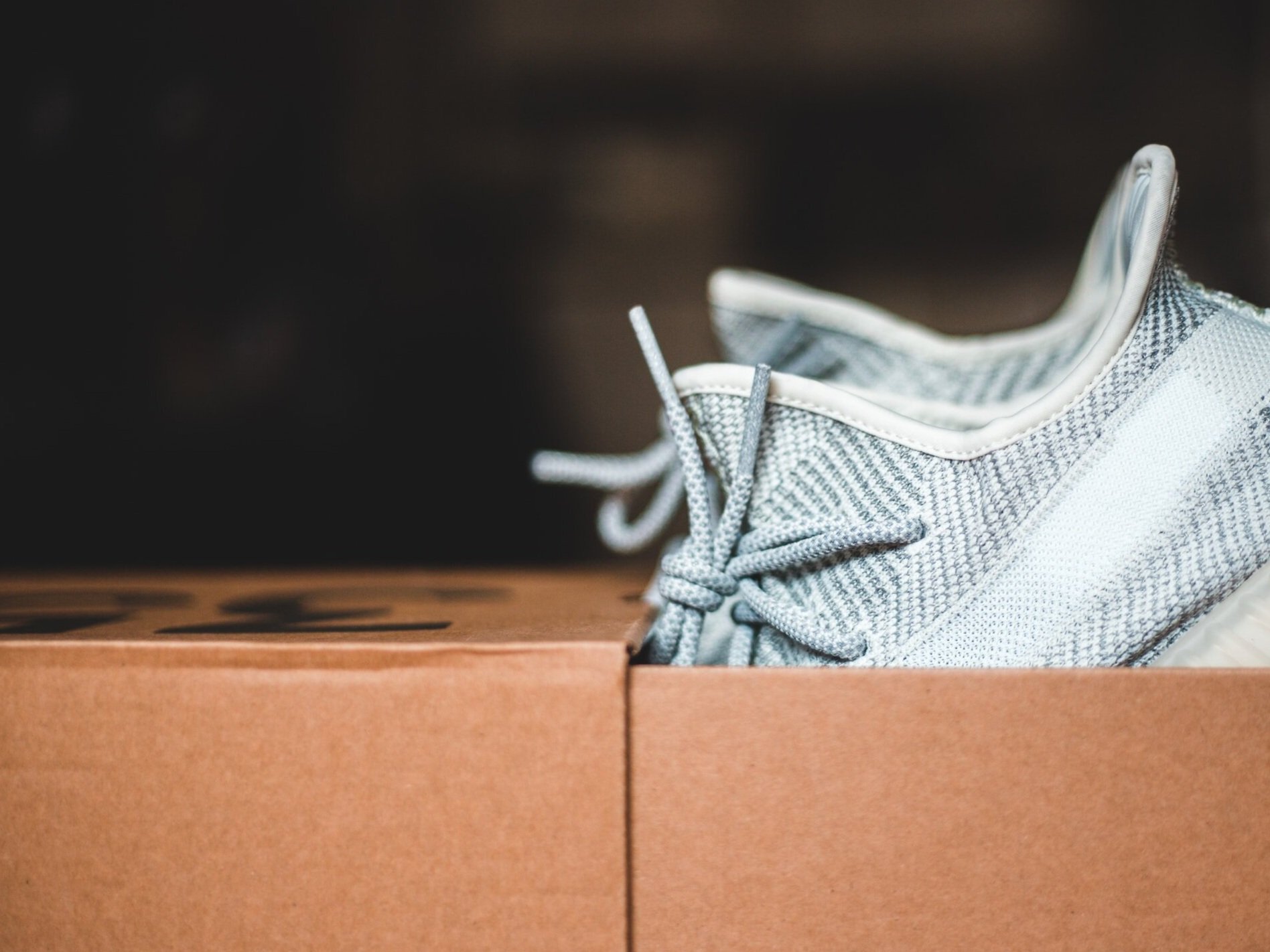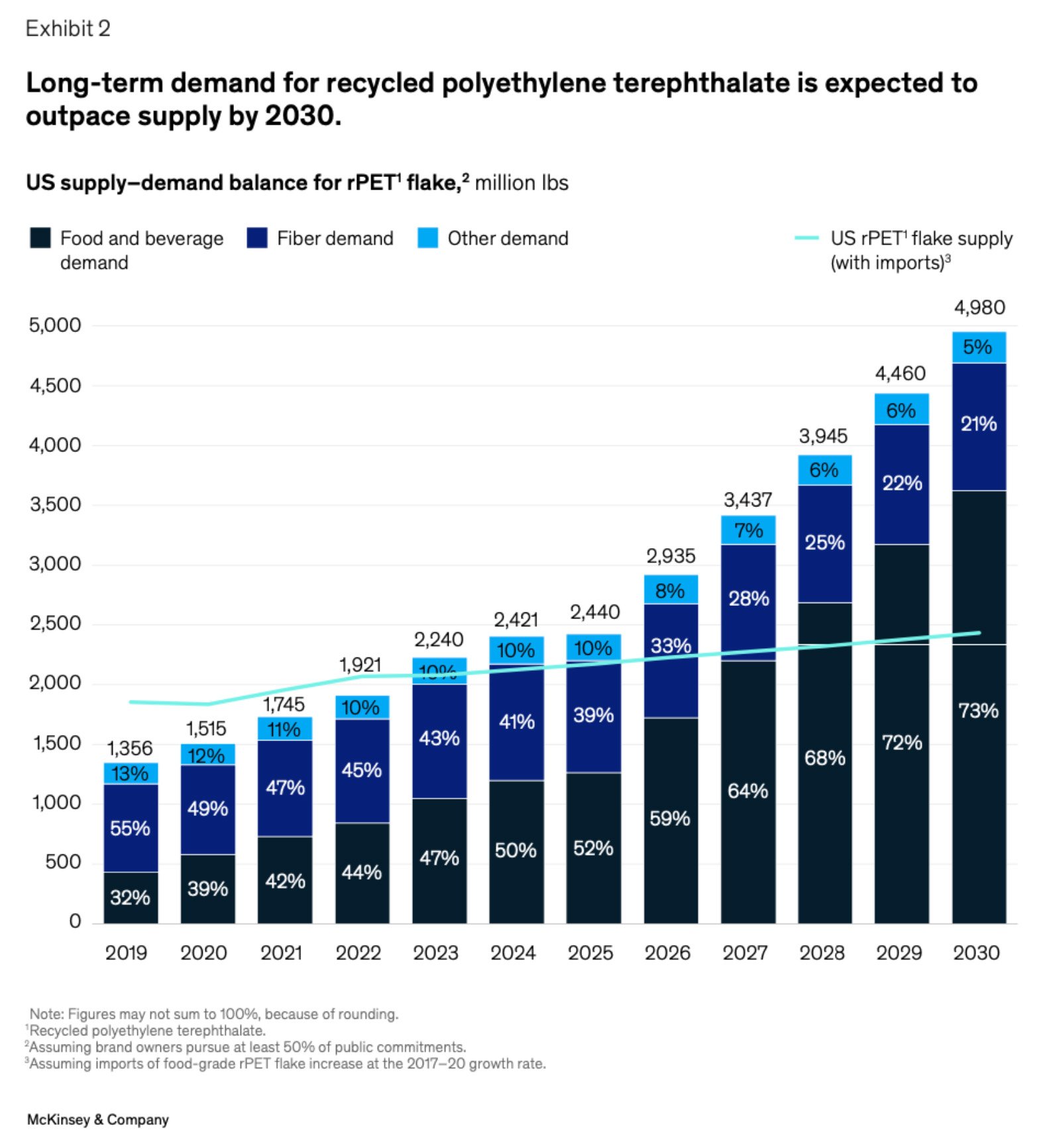The facts.
-
Plastic bottles are made of a compound called PET, polyethylene terephthalate. This is really a type of polyester which is molded and extruded into plastic bottles.
-
This connection to polyester helps explain the connection of plastic bottles to clothing and shoes.
-
PET is recyclable to make plastic bottles again and again.
Recycled plastic products… the big picture.
There are several companies promoting clothing and shoes made out of recycled plastic bottles (see our reviews of Girlfriend Collective and Rothy’s). This sounds amazing, right? After all, we know that the equivalent of 1 garbage truck of plastic is dumped into the ocean per minute and that by 2050, there will be more plastic than fish in the ocean. Surely, making clothing from recycled plastic products is a good thing? Or is it? As always, it’s not so simple, let’s investigate!
rPET what is it?
Recycled PET (rPET) is the term for the recycled material. Let’s understand how PET from plastic bottles becomes rPET.
In short, PET bottles are sorted, crushed and shredded into PET fragments for recycling. These fragments can then be used in one of two ways, for food safe containers eg drink bottles or other uses such as clothing/seat belts. Each pathway has different implications for future recycling which is important:
-
rPET which is recycled back into bottles is a closed loop process which means that the new bottles can be recycled over and over with the current recycling process.
-
rPET which is recycled into clothing, shoes, seatbelts etc is an open loop process which means that they are not recycled again. 99% of these items end up in landfill.
rPET vs Virgin Plastic
-
rPET still has the same properties as original plastic
-
It is a stable, long lasting material which is versatile and used in many industries.
-
It will also stay around for years. rPET like virgin plastic takes hundreds of years to degenerate.
-
Both shed micro-plastics into our environment.
rPET is less resource intensive to manufacture:
-
There is no question that recycling PET and reusing it is better than using virgin plastic.
-
In fact, some sources say that this can use 90% less water and almost 80% less energy.
-
rPET is also significantly cheaper to make than virgin plastic, hence valuable for business
So what is the problem with rPET?
There is ONE BIG problem: the demand for rPET is far exceeding our recycling habits! Our consumer habits far exceed our recycling habits. As a nation, our recycling rates are still very low, though we appear to be slowly improving. Our PET recycling has only increased 1% between 2020 and 2021.
At right, the graph shows the projected increase in demand for rPET from all sources. It is estimated that by 2024, we will be unable to meet rPET demand. As bottle manufacturers ramp up to meet their ESG commitments and as consumers want more and more recycled clothing, this shortfall is expected to worsen.
.
The choices.
Life-focused.
If your focus is on being kind to living things, buying items of clothing made from recycled plastic products is not enough. Do your homework on where they are manufactured and how the brand treats their manufacturers. Kindhub reviews are a good way to research these companies.
-
The demand for rPET has resulted in many companies looking to less developed parts of the world for labor and processing. This can be a benefit in that stray plastic is reclaimed but labor laws are not well developed in these countries.
-
rPET processing results in fine particles being released into the air. In less developed countries, the system is not as automated as it is in the USA/Europe, resulting in potential harm to the workers (see videos in resources below)
-
rPET releases microplastics into the environment just like regular plastics esp when heated – this impacts human health especially for all clothing items made from rPET.
Earth-focused.
When considering the environment as your focus, reduce your use of single use plastic overall. Recycle as much as possible. Look for the #1 in the recycling symbol. It helps you easily identify PET.
-
Research your local recycling companies and learn what you can do to improve recycling yield
-
Be mindful of laundry practices and micro-plastics leaching into the water.
-
rPET is without doubt better than virgin PET – it less resource intensive and less expensive to manufacture
-
Closed loop recycling seems to be a better long term solution in today’s recycling world
-
Open loop recycling, while helpful in the short term, may not be as beneficial in the long term.
Holistic.
An integrated approach focuses on reducing how much you consume. Buy only what you need.
-
Excess consumerism is a major problem.
-
Don’t be lulled into falsely feeling good about your purchases, just because something is made from rPET.
Additional resources.
Take a deeper dive.
-
Good Housekeeping article on recycling labels
-
McKinsey insights into rPET
-
Video showing rPET manufacturing in Asia
-
Video showing rPET manufacturing in Europe
We’ve done some homework! Each week we post new reviews of popular apparel, accessory, and shoe brands to see how they stack up on the kindness continuum.




